Chumikgiarsa is situated along the wide sarchu plains just after the dhabba stop of Sarchu. It is however mostly viewed from a distance as the wide stepped river and plain keep it at more than an arms length. For the past 2 years I have always been very curious to visit this village that would appear as little dots of houses along a beautifully eroded river plain step. This year we fortunately spent a rest day on the sarchu plains which enabled me and a few of the more energetic others to find the bridge and hike the 1hr30 to this typical Ladakhi village which is possibly in one of the most remote areas along the Manali Leh highway. It is only accessible by foot and it would still take the villagers at least most of the day to get to the nearest town (Keylong).
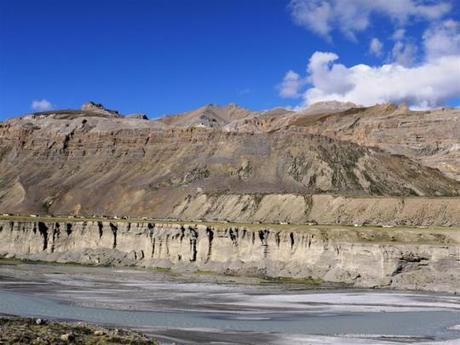
Chumikgiarsa village as seen from the Manali-Leh Highway, although it looks relatively close to get to, it requires back tracking to thee one and only bridge, and then an hour and a bit hike. (Although the river looks possible to cross, I can assure you it isn't we investigated that option!)
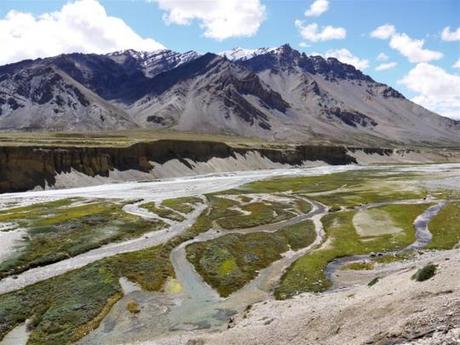
We walked alongside the beautifully braided river, highlighted with illuminous green moss. Despite the intense aridity springs sprung from the rocks and is essentially the reason why Chumikgiarsa was built along this ancient flood plain.
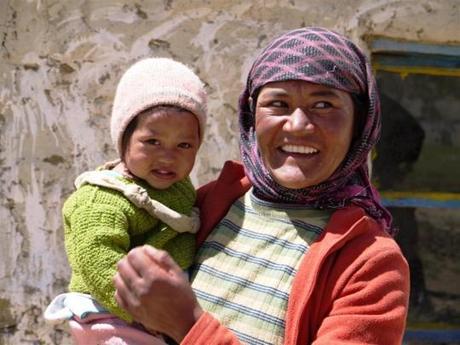
Tenzin and her daughter Padme were washing clothes in a wooden bucket outside her simple, mud brick house when she stopped to greet us and invited us in for tea.
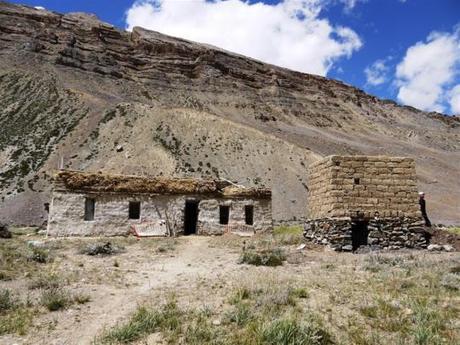
Tenzin's simple and functional adobe house. Note the dry composting toilet in the foreground
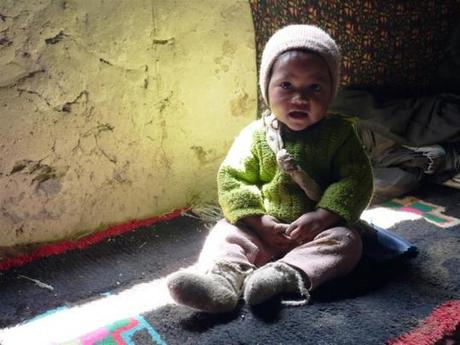
Baby Padme. Her amaa served us tea and also offered us some biscuits, a humbling gesture from someone who has so little in material terms. It was clearly the only form of provision she had on the shelf apart from staples like tsampa (barley).
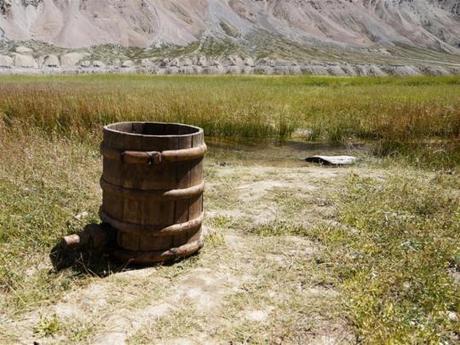
A wooden pail for collecting water and milking yaks. Barley fields in the background are irrigated by elaborate channels of glacial melt and spring water.
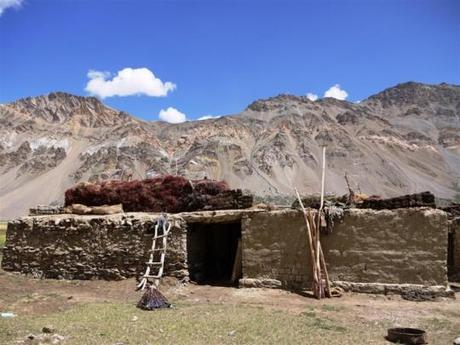
Another typical homestead in the village of around 16 households. Juniper and brush are collected during the summer months and stored on the flat roofs for winter fuel and insulation.
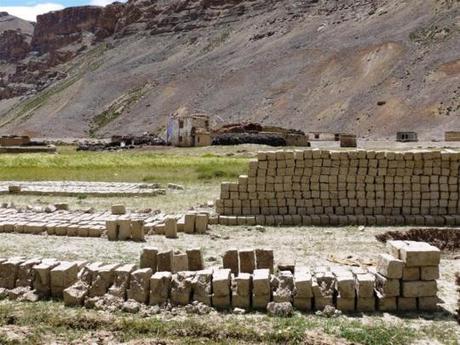
An almost self sustaining village, all houses are built with locally made sun dried mudbricks.

Some of the few imports or rather oil barrels dumped and left behind by the road builders. A use for almost anything can be found, here they are used as a barrier to keep the sheep in during the night.
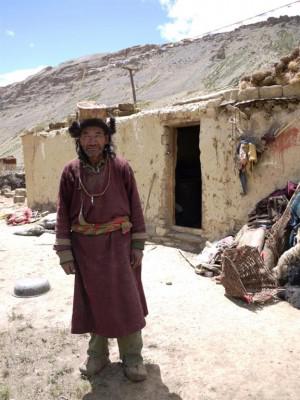
Dear Dom Dom Namgyal spotted us from his fields and ambled along to come and greet us. He proudly showed us his gatherings of seabuckthorn berries and was very keen to be photographed even pulling out his tourquoise beads around his neck so that they could be seen. Note his yak skin boots.
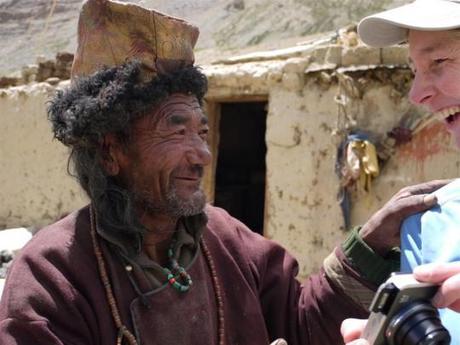
Caroline shows him the photo. I look forward to returning next time and handing him his own printed copy.
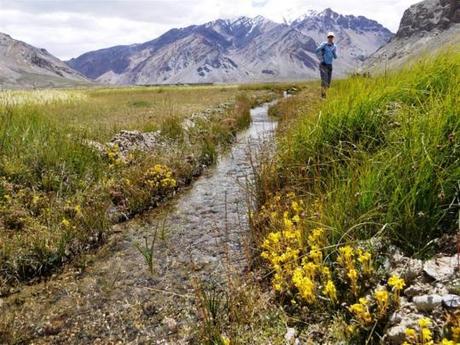
Beautiful summer flowers amongst the barley and wheat, these channels made by the villagers, often cover many kilometres for irrigation purposes.
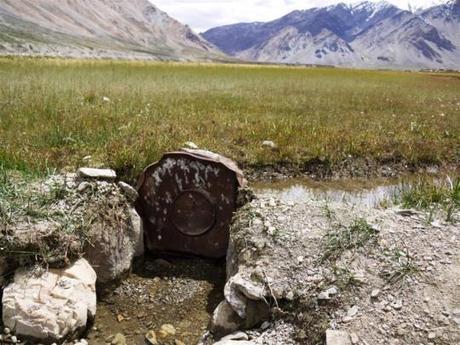
Another use for the old oil barrels, diverting channelled water!
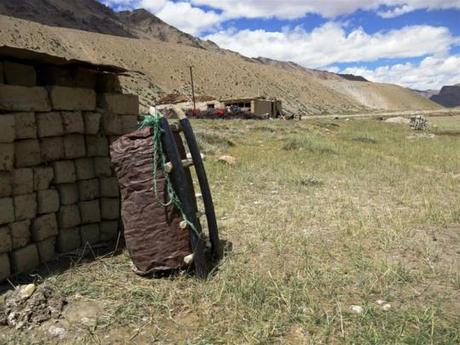
....and my favorite of them all, a sled made from an old barrel. Hard to believe that the villagers live here all year round at 4000m, the winters must be truly freezing and the highway is closed - Chumikgiarsa is isolated completely.
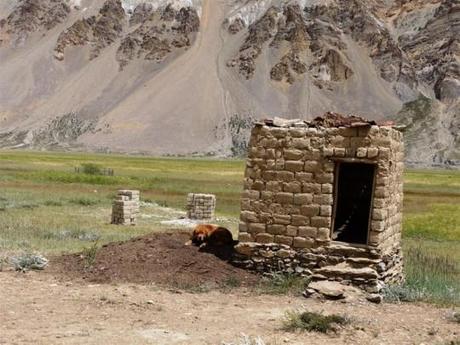
Each house has its own composting toilet, a very simple yet effective way of dealing with human waste. The dry conditions result in a rapid breakdown of the waste rendering it useful for the next spring when the night soil is used on the fields. Absurdly water borne sanitation has crept into the main towns, a completely unsustainable polluting solution in an extremely water scarce part of the planet.
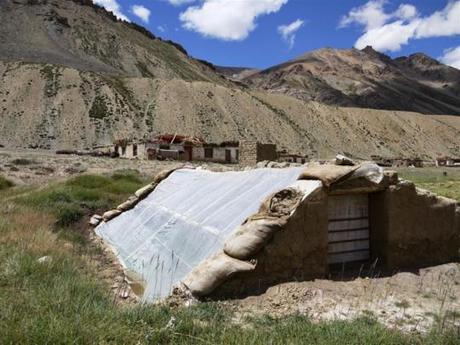
Sustainable technologies like this greenhouse are appropriate and enable to growing period for leafy vegetables to be extended by another six weeks. Solar cookers and water heaters are seen in some of the villages nearer to the main towns.
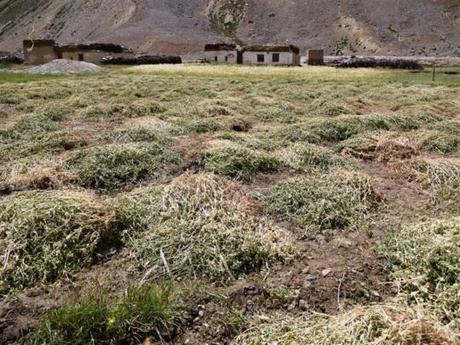
Post pea harvest. Nothing is wasted, even these pea husks are stored and kept for animal fodder during the long winter.
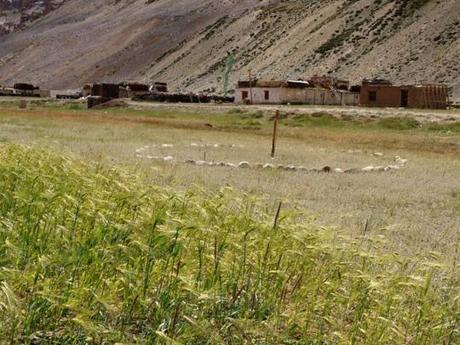
Threshing round, once the wheat and barley have been harvested, yaks are tethered to the stick and stamp the seed free from the husk. The growing season is only 4mths long, all Ladakhis are able to grow everything they need to keep them going for the next 8mths.
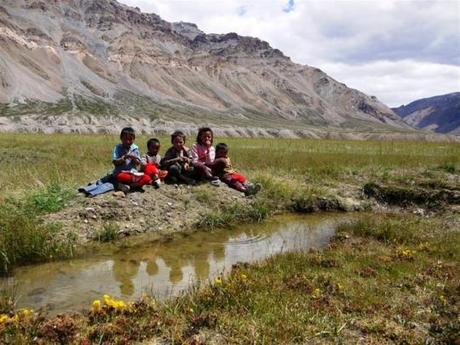
Village children entertain themselves with vivid imaginations - no toxic disposable plastic toys to be found!
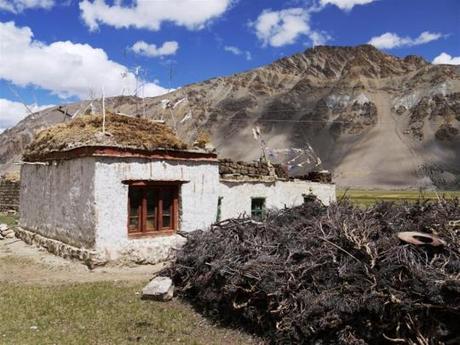
What a privledge to have visited this village, a glimpse into a not too often visited village, a humbling and inspirational visit.

